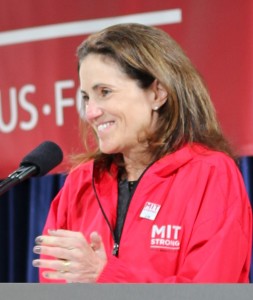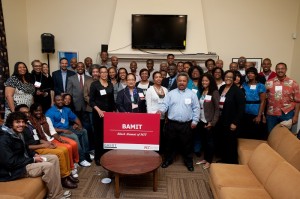Benefiting from Affinity Groups, Wherever You Are
-
-
slice.mit.edu
- 1
Filed Under
Recommended

After moving back to New York City, though, Marti soon found out what great opportunities could arise from networking, collaborating, and building relationships with fellow women graduates.
“The AMITA events in New York were a great way to meet alumnae in an informal setting and hear about people who became successful in their fields or switched careers,” Marti says. “There were alumnae who were one or two years out to 20 years out. It was nice to have that diversity in age and majors and certainly in careers post-MIT.”
Thanks to a contact she made at one event at the Metropolitan Museum of Art, Marti started having regular lunches with a fellow alumna who became a mentor. At another event in NYC, Marti met a fellow young alumna who just enrolled at business school. Though she had never considered it herself, Marti enrolled a few months later.
Marti, now a vice president at a banking advisory firm in New York, is one of over 26,000 living female graduates of the Institute. But a great majority of these women may have never heard of AMITA or the several other affinity groups offered by the Alumni Association organized by ethnicity, gender, or special interest.
Given its size, AMITA is about far more than just networking events. The group sponsors an academic award for graduating seniors each year, organizes mentorships and externships for current students, and leads discussions on campus about current topics applicable to all students. At the AMITA annual meeting on June 8, MIT Chancellor Cynthia Barnhart SM ’86, PhD ’88 will tell her story of becoming MIT’s most senior academic officer. Barnhart is the first woman to hold the post.
Interested in finding a group that fits you? AMITA is one of 10 MIT affinity groups you can join by identifying yourself with this simple form. Doing so will also grows awareness, participation, and engagement across the alumni community.

“MIT Admissions does a fantastic job fielding the best applicants each year from around the world, but the alumni experience is integral to this process. Identifying yourself to the several gender- and race-related affinity groups can have a huge impact,” says Moana Bentin, associate director for affinity communities. “Alumni who've identified themselves as women, or black, or gay or bisexual, or any other affinity are able to advocate and articulate their perspective as a person of color or a member of the LGBT community to potential applicants and parents.”
“Take a family in Shreveport, Louisiana, for instance, that is hesitant to send its daughter to Boston,” Bentin says. “But seeing another young woman, or black student, or gay or bisexual alum who graduated, feels supported by the institute, and is excelling in their role is immeasurable. The likeliness of impostor syndrome drops exponentially, and this standpoint message goes a long way.”
Besides AMITA, there are these groups: Alumni Association of the Center for Real Estate; Black Alumni of MIT; Bisexual, Gay, Lesbian, and Transgender Alumni of MIT; Latino/a Alumni/ae of MIT; MIT Arab Alumni Association; MIT Crew Alumni Association; MIT Military Alumni/ae Association; MIT Media Lab Alumni Association; and the MIT South Asian Alumni Association.








Comments
Virginia
Fri, 05/23/2014 2:38pm
Marti, now a vice president at a banking advisory firm in New York, is one of over 26,000 living female graduates of the Institute. But a great majority of these women may have never heard of AMITA or the several other affinity groups offered by the Alumni Association organized by ethnicity, gender, or special interest.